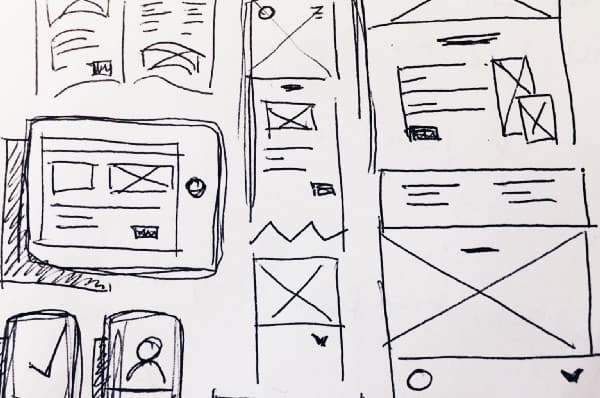Prototypes, not action items, get you further.
At Voltage Control, we’ve done something that might be scandalous at other companies. We’ve made all meetings optional. If a team member doesn’t think they need to attend a meeting, they’re free to decline it. It’s a small gesture, but a reflection of our belief that many meetings just don’t need to happen. It leads to an increase in quick and direct conversations and, ultimately, to fewer meetings and more space and time for the things we want (and need) to do.

That’s because we’re on a personal mission to rid the world of shitty meetings. That’s something we can all rally around, correct? We all love to hate meetings, yet they keep popping up on our calendars and we keep accepting them. In January 2019, the meeting scheduling company Doodle released its The State of Meetings Report and estimated that “pointless meetings will cost companies $541 billion in 2019.” Wow.

I’m convinced this is why I see so many people energized and excited when they participate in a Design Sprints or innovation workshop: although you are technically “tied up” for five days, you are getting authentic work done. You’re making decisions. You’re progressing. You end the week with a touchable, tangible prototype. Things happened!
This is in stark contrast to people’s typical days. We’re calendar-bombed with tons of meetings that we don’t need to be in or have no context for. We show up without much attention to whether or not we can add value. Everyone ends up booked with back-to-back meetings, buffered only by a quick restroom break (whoops, now you’re late to your next meeting) and the time it takes to dial into your next phone call. When are you supposed to do the things you got assigned in your last meeting?
We’ve got things backward: we meet and then do “the work” after the meeting.
In a recent talk, I told the participants, “Do the real work in the meeting.” I felt everyone sit up in their chairs. It struck a chord. We’ve got things backward: we meet and then do “the work” after the meeting. We’re so busy talking about the work we need to do when we could be rolling up our sleeves and getting to work in the session itself.
Circular Conversations. Little Action.
What do meetings look like in your organization? Let’s talk about a couple of typical scenarios. Here’s the worst-case: Participants don’t know why you’re meeting. No one shows up with an agenda. Everyone starts talking haphazardly and conversations go in circles. No decisions get made. Everyone leaves the meeting with no idea about what happens next. Maybe they’re hoping someone else will take action.
“If you had to identify, in one word, the reason why the human race has not achieved, and never will achieve, its full potential, that word would be ‘meetings.’”― Dave Barry
Now the best-case scenario, or maybe call it your standard, run-of-the-mill meeting: someone’s pulled together a meeting agenda and sent it out beforehand. You have a focused discussion. You conclude with a handful of action items and people have tasks they need to do after. But, even in this situation, I’ve seen the process go awry. Meetings aren’t always adequately documented. There’s misunderstanding after about the direction or next steps. People start working on items discussed in the meeting, but something gets lost in translation.
Let’s stop saving the work for when everyone disperses back to their desks.
Beyond an annoying 30 minutes in your day, what’s so bad about these scenarios? Work eventually gets done. It’s easier this way. We might be accustomed to it, but it’s not efficient, it’s not effective, and it’s certainly not an inspiring way to work. Let’s stop saving the work for when everyone disperses back to their desks. If you want to bring the spirit of innovation into your daily work, push yourself and others to start doing the work in the meeting. I think one of the best ways to do that is to bring a prototype to every meeting.
“The least productive people are usually the ones who are most in favor of holding meetings.”– Thomas Sowell, American writer and economist

No Prototype. No Meeting.
This concept of “no prototype, no meeting” isn’t new. At the design consultancy IDEO, they’ve long talked about something called “Boyle’s Law.” Named for Dennis Boyle — an IDEO engineer with over 50 patents — the law states that you should “Never attend a meeting without a prototype.” Allan Chochinov, Chair of the School of Visual Arts MFA Products of Design, also wrote about his hatred of meetings and even created a Chrome and Slack extension that automatically changes the word “meeting” to “review” when you try to book a meeting.
While the conversation about the importance of prototyping has been around for a while, I don’t think it’s taken deep root yet. There’s still a lot of room for the concept to spread in organizations and workplaces.
Scared of Prototyping?
Before we dig in further, I must talk about what I mean when I talk about prototypes. The term prototype can be daunting. Historically, prototypes were mock-ups of something physical — let’s say a new chair or piece of electronic hardware. Today, when we think about prototypes, we usually think of digital prototypes. With the explosion of prototyping tools, it’s incredibly easy to build true-to-life, clickable prototypes that give the look-and-feel of a digital interaction.
“If a picture is worth a thousand words, a prototype is worth a thousand meetings” — Tom & David Kelley
However, it can be much more “low fidelity” than that. Prototypes take many shapes and formats. While you can certainly push yourself to learn a prototyping platform like Sketch or Figma, you don’t have to. Use the skills you currently have to make your prototype. Leverage the tools that are most comfortable for you. If you’re a product manager, strategist, or writer, you might write a brief, draft a storyboard, or create a sample pitch deck about the project you’re working on. If you’re a developer, maybe you code something quickly to get a sense of how an interaction will work. If you’re a designer, you could bring a wireframe or mood board.
The takeaway is: prototypes don’t have to be complicated. They can be quite simple. Test whether your new, two-pound product is too heavy by asking customers to carry around a two-pound weight for a couple of hours. Want to know if 3 x 5 inches is the best size for your new smartphone? Cut out a 3 x 5 piece of wood and carry it around in your pocket to see how it feels. The important thing is to focus on the question you are trying to answer or what abstract concept you need to make more tangible.




Why We Resist and Why We Shouldn’t
Saying we should bring prototypes to meetings sounds excellent, but I know that it can be scary for some. We resist putting things down on paper. We’re reluctant to get our ideas out there. We’re afraid to be judged. We’re afraid someone will think we’re a fraud. It’s hard to take the first step and make your thoughts visible for critique. It requires you to feel safe sharing something that isn’t fully formed. If your workplace doesn’t encourage that type of vulnerability, this is a fantastic way for you to start demonstrating the type of behavior and attitudes you want others to mirror.
And, when you force yourself to push through that fear, I think you’ll find your worries don’t come true. When you show up with a prototype, most people are delighted rather than critical. Because now, there’s something to rally around, to build off of, to shape, to make even better. Mostly, people are just appreciative that you brought something to the table and put a stake in the ground.

Challenge Yourself
When you start focusing on doing work in the meeting, not after the meeting, a couple of things happen.
- First, your meetings aren’t so dull. They turn into working sessions, not slogs. There are concrete things to talk about. Everyone’s excited and engaged.
- Second, more gets done. The prototype pushes things along just enough to get the ball rolling. It drives momentum and action.
- Third, there’s more clarity about where you’re going and why. There’s something to reference.
- Lastly, I find this way of working is more inclusive. If everyone is encouraged to bring a prototype, everyone can have a voice. Plus, others can use your prototype to build and co-create, which means that the ideas with the most merit emerge.
So, if you want to start doing more work in the meeting and less meeting and then working, consider a “no prototype, no meeting” rule. Take baby steps and tell your team that you’re trying it for single meeting or for a week. Or, start the habit yourself and you’ll likely see it spread like wildfire through your team.


